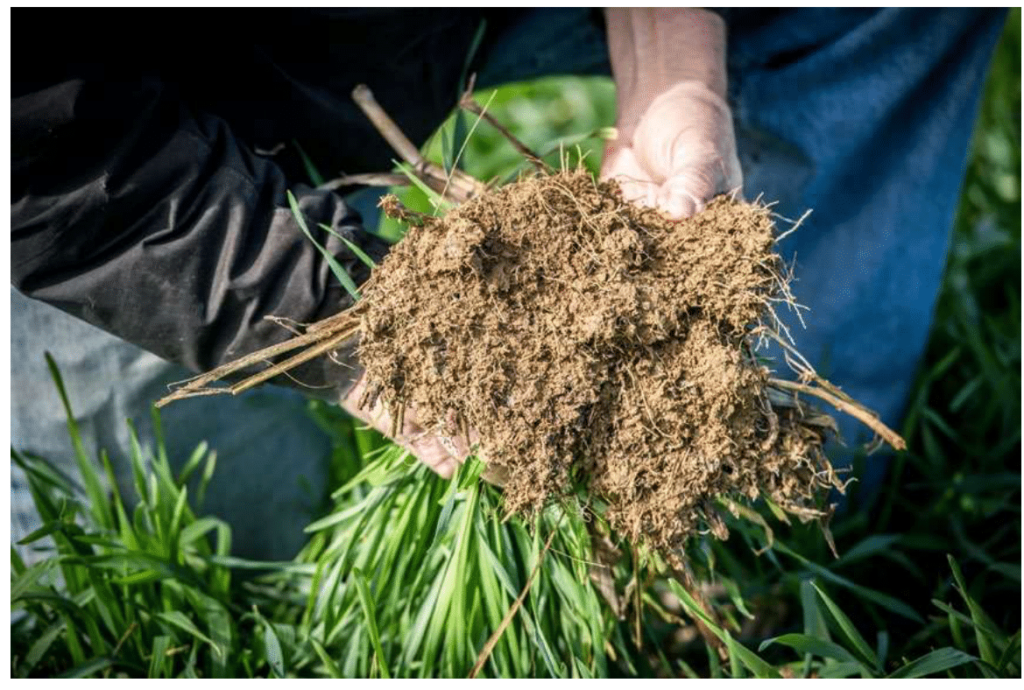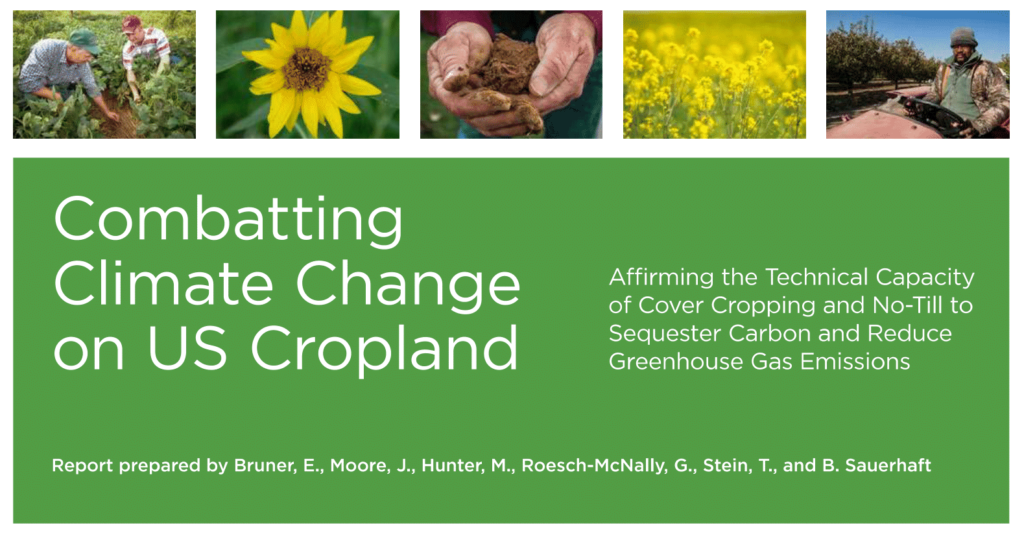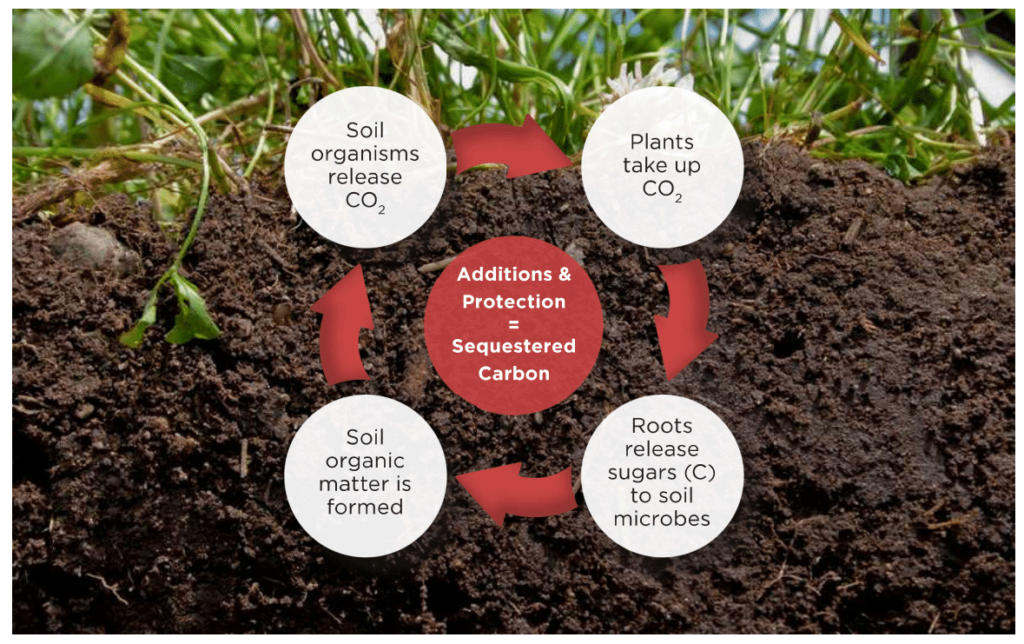Last updated on February 12th, 2024

Rebuilding carbon stocks in agricultural soils is not only crucial for the continued productivity of our nation’s farmland and livelihood of its farm families, but also necessary to combat the impacts of climate change.
Despite a recent uptick in soil health practice adoption, fewer than a third of the 260 million U.S. acres in row crops are managed with no-till, and less than 5% use cover crops. By increasing the use of just these two practices, U.S. farmers have an unparalleled opportunity to combat climate change, improve water quality, and build on-farm resilience and profitability.
American Farmland Trust’s new report, “Combating Climate Change on U.S. Cropland,” focuses on the significant potential of no-till and cover crop practices to increase soil carbon sequestration and reduce nitrous oxide emissions for a net reduction in GHG emissions.
While it is unrealistic to expect farmers to make management changes overnight, increased and sustained use of no-till/strip till and cover crops is achievable with current technology, rendering these practices readily available to offer immediate climate solutions.

As part of its report, American Farmland Trust (AFT) evaluated a near-term scenario focused on row crop acres in selected corn belt and southeast states. It found that acres in the study region using cover crops and/or no-till are already reducing net GHG emissions by 67.6 million metric tons of carbon dioxide equivalent (CO2e) per year. If rapid adoption of these two practices in the next 3-5 years happens in the study area, then net GHG emissions can be reduced by an additional 29.6 million metric tons of CO2e per year, for a total of 97 million metric tons of CO2e per year.
Bottom line – if farmers on a fraction of U.S. cropland rapidly increase adoption of cover crops and no-till in line with AFT’s scenario analysis, the total acreage of these two practices will sequester the equivalence of removing 21 million passenger cars from the road for a year or growing 1.6 billion tree seedlings for one year.
U.S. farmers could deliver these benefits in the next three to five years if federal and state governments provide additional support, prioritize financial and technical assistance programs, and develop innovative incentives.

While 100% adoption of no-till and cover crops is unrealistic, these two practices are just a starting point, and the implementation of additional synergistic practices on cropland and grazing land could significantly combat climate change through reductions in GHG emissions and increased soil carbon sequestration.
Even greater climate benefits beyond the near-term scenario in AFT’s report could be realized by expanding the technical, financial, and social support for farmers and ranchers. Agricultural soils have significant potential to capture and store soil carbon—but only when we give our farmers the support they need.
For this reason, AFT is encouraging the Biden Administration to act now by prioritizing the protection of America’s most threatened working lands and the broad implementation of conservation practices in the attainment of their ambitious 30 x 30 goals of conserving at least 30 percent of our lands and waters by 2030.
For more information on the role farms and ranches can play in combatting climate change, visit www.farmland.org/climate.
Brennan Hafner is a Writer and Editor at American Farmland Trust.
